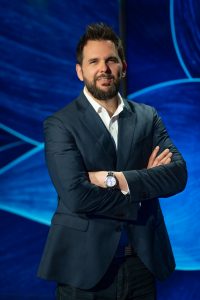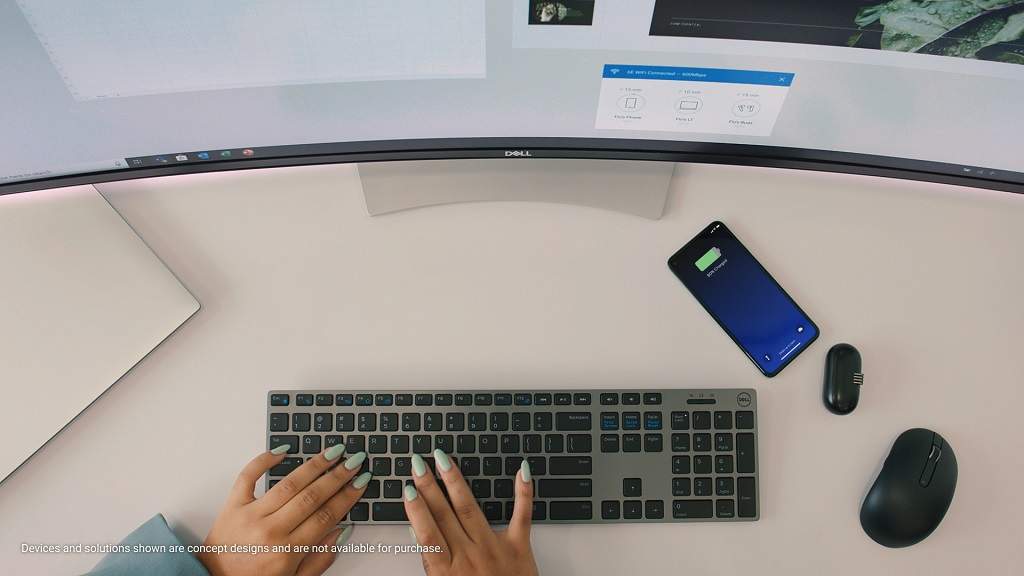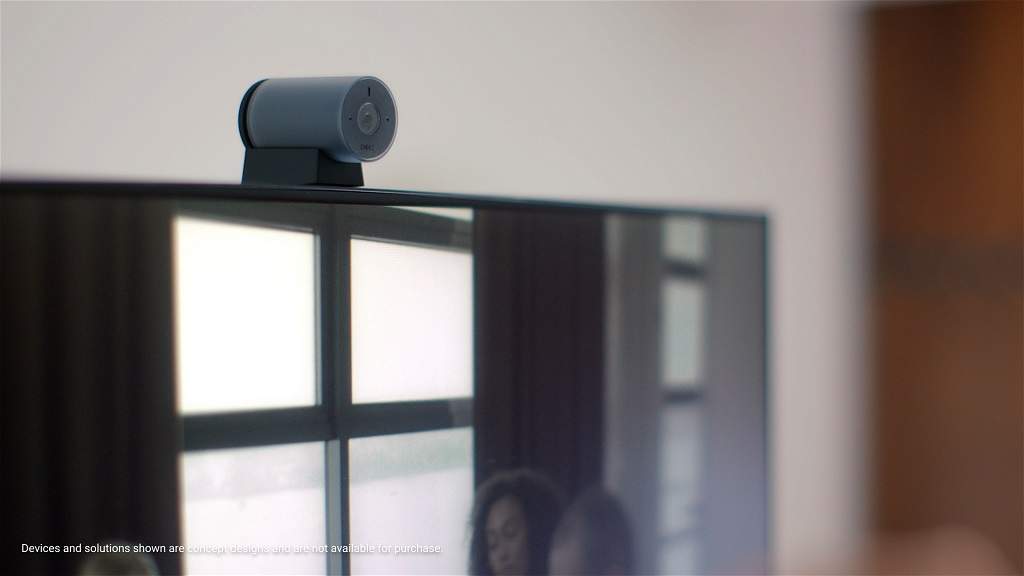The digital world has changed significantly in the last 20 years, affecting human habits and transforming the way we manage and handle data. IDC estimates that by 2020, more than 64 ZB of data will exist globally. According to Zsolt Rakoncza, CEO of Dell Technologies Hungary, new types of tasks don’t necessarily require more powerful servers or architectures, but a new, different approach.
– What does it mean for Dell Technologies’ corporate culture that Dell Technologies has grown and become a successful, innovative multinational as an American company, and indeed as a defining story in the iconic American self-made man story?
– We all pay tribute to what Michael Dell has achieved in life. At the same time, our company culture and values reflect what is most important to us as a company and guide our decisions and actions.
- Customers: we believe that our customer relationships are the foundation of our success.
- Shared success: we believe in and value our colleagues.
- Innovation: we believe that innovation is the engine of growth, success and development.
- Results: we always strive to deliver exceptional performance.
- Integrity: we believe that integrity should guide our efforts at all times.
– As a senior manager, what does the American business culture mean to you and to what extent does it apply to Dell Technologies’ Hungarian subsidiary?
– In addition to the values highlighted above in our company culture, I would like to emphasize to the point, direct communication, which I also expect from the other party. This is the basis for achieving mutually successful collaborations, where everyone understands each other’s motivations and priorities. This is what the Dell Technologies team in Hungary, in line with me, proclaims every day. We are always proud of our achievements and the expertise of our team to help our partners and customers achieve long-term sustainable growth and success.
Dell Technologies’ “Progress Made Real” program includes the company’s 2030 goals. Dell has identified four areas where we can make the biggest impact – promoting sustainability, focusing on inclusion, improving quality of life, and protecting ethics and privacy. These are also key points of our home-grown business culture, of which diversity is an important part. We support women’s employment and, more importantly, women’s careers as managers. In addition, environmental awareness is an important aspect here at home.
For example: since electronic equipment is hazardous waste, Dell distributors and retailers of Dell products fully comply with their legal collection obligations. At the same time, these devices do not necessarily end up in recycling plants, as the company refurbishes those that are still usable and sends them to a place where they can still be used. But other local environmental initiatives are also under way. The Hungarian Dell team has planted a tree on behalf of each participants of Earth Day special edition of „Szerda reggelek a Dell-lel” online event series, so more than 60 new seedlings grow thanks to the team.
– What is the best way to describe Dell Technologies’ history in Hungary and what is the company’s contribution to the development of the Hungarian economy?
– Dell Technologies Hungary is characterised by continuous growth and development. We believe that technology can make the world a better place if we use it properly. We provide the right tools to the Hungarian organisations, contributing to their business success.
Looking back over the past two years, it has been a challenging time to support our customers and meet their needs in this difficult environment, but working closely with our partners, we can look back on this period as a success. For many organisations, the renewal of their IT environment has become a key priority, and we have played a major role in this, successfully helping our customers in this accelerated digital transformation. We have been able to respond quickly and with outstanding solutions to the high demands of the emerging remote working environment. We have positioned our company in the market as a trusted advisor and solution provider, providing our clients with customized IT solutions that can help them overcome any business barrier.
– The recent period has brought significant changes in the IT market with the rise of internet usage and online solutions. How has Dell Technologies responded in the B2B and B2C segments in terms of development and commercial solutions?
– In all areas, we are constantly developing our solutions based on our customers’ needs and newest trends.
– In the B2C area, our business models have attracted a lot of attention with the Latitude mid-range and premium client devices, delivering outstanding performance in any user environment with innovative technologies built-in.. For example noise filtering, load optimisation, application prioritisation, hardware security solutions and remote manageability. Among our monitors, the conference monitors with built-in webcams and speakers were the main focus, but our higher resolution displays (up to 8K) and curved monitors, which could reproduce a multi-monitor office environment with less space in the home, were also in demand. In the company’s developments this year, particular attention has been paid to enhancing our existing devices that support hybrid working. Our new mobile devices now feature AI-based noise filtering, FHD camera, 2x Thunderbolt 4 ports, automatic switching between wireless networks based on signal strength, among other features. A whole new range of conference monitors has also been launched to cover the full range of needs. In all segments we find that the initial ‘buying fever’ is being replaced by conscious planning and a well-thought-out purchasing strategy that that allows us all to be prepared for the challenges of the future.
– We are also adapting the customers’ needs in the B2B area. One of the biggest challenges is the storage, management, and governance of data. In the so-called data decade we are living in, the volume of data worldwide is expected to reach 175 ZB by 2025. However, less than 0.5 percent of data is currently being analysed and there is a lot of ‘dark data’ held by organisations. While organisations are collecting more and more data, the rate of growth is outstripping their ability to truly harness the benefits of turning data into insights. The digital world has changed significantly over the last 20 years, impacting human habits, transforming data management and the way we deal with data. According to IDC, by 2020, there will be more than 64 ZB of data worldwide. In addition, more technologies have emerged that further increase the amount of data generated, such as the Internet of Things (IoT). Today, all of our devices are slowly connecting to some kind of network: every second, 127 new IoT devices connect to the internet, and Gartner predicts that by 2025, 75 percent of the data generated by businesses will be created and stored on edge networks. So the amount of data is constantly growing, so the data storage industry is currently booming, and this is a huge challenge for companies.
This trend is also becoming more and more noticeable in the domestic market, where domestic SMEs are also generating more and more data. And this is not only due to the emergence of new technologies, but also to legal regulations and the reluctance of companies, especially smaller ones, to delete data. They want to keep it safe and secure. All this indicates an even larger data storage volume, as this information even needs to be archived in the long term. Accordingly, we offer solutions for storing both structured and unstructured data that make their lives easier.
– The server market is now being shaped by 3 trends. In the world of IoT, a lot of sensors are collecting data. And once collected, it makes sense to manage it. In this managing, a big change is happening. Namely, traditional badge processing (i.e. end of month, end of weekend or end of day processing) is being replaced by instant processing. The difficulty here is that we have to combine, compare and correlate a lot of data at once, and we may not always know what we are looking for. All we know is roughly what we expect, and we expect the machine to give us some guidance. So, overall, there are a lot of changes that have happened and are happening with IoT, 5G and instant analytics that require new types of architectures.
– How does the IT world follow this?
– Another important trend in the world is the rise of HPC (High Performance Computing). The world of traditional HPC environments now ranges from university research networks to enterprises. Businesses are also increasingly using HPC solutions, where significant server resources are dedicated to finding the answer to a well-defined problem. For example, if we are looking for a molecule that is similar to a particular molecule, or if we want to perfect, streamline or reinforce the shape of a car or any other shape.
These are problems that cannot be solved by traditional spreadsheet methods, but only by using servers with high computational capacity. The good news is that, in addition to processors, general-purpose graphics processing units (GPUs) can be included in the task, increasing computational capacity by an order of magnitude or two. So, by including these specific cards in the processing, a big jump in computing power can be achieved.
– What about artificial intelligence (AI), which is becoming more and more part of everyday life?
– The third trend relates to the increasing use of artificial intelligence. By artificial intelligence we mean an entry-level AI or machine learning, but also neural networks or deep-learning. In all of these cases, there is the potential to apply it to existing business processes where it has not been possible to rely on machines to make decisions.
It is important to note that in 99 percent of cases, the machine does not make the decision, it simply presents a probability that it is worth making a decision one way or the other. The big advantage of artificial intelligence is that we are not just speeding up the processing of information by an order of magnitude or two, but we can do completely new things. For example, we cannot program the Highway Code. Even if we had 100x, 1000x as many resources, we couldn’t program the relationship between road users. You need a completely different approach if you want to do this. Or, machine vision is another example: in this case we cannot program everything. Similarly, it is a challenge to check a component: for example, if a screw is in one position, it is good, but if it is in another position, it is no longer good.
All of this cannot be programmed, we can only think in terms of a black box and give the black box the input parameters that the box uses to determine whether something is good or not. To each of these, the box assigns a probability, which means that for a given probability level, my decision is correct. Artificial intelligence thus provides a new way of solving problems that could not otherwise be programmed.
The trends show that new types of processing tasks do not necessarily require more powerful servers or architectures, but a new and different approach. This has resulted in workload-based design at Dell Technologies, which means providing the right server or architecture to support the workload of our partners and customers for the job at hand. In addition, our latest PowerEdge servers are now designed to meet new types of workloads.
With all this in mind, we see the future in hyperconverged infrastructure in the B2B space. In this area, there is currently no demand in Hungary or in other countries for the same volume as for classic infrastructure elements. However, organisations with a long-term digital strategy are already thinking about this because it provides a much more flexible framework. And we also have a role of evangelisation in the market in this process, for example in relation to hyper-converged systems, because the flexibility and reliability of these solutions brings significant added value to customers. Experience has shown that a properly optimised, future-proof IT platform enables companies to realise the full potential of their organisation.
– What will the world of online solutions look like for Dell in the next 5 years?
– In addition to 5G, AI, AI that I mentioned in my answer to the previous question, we see that in the next few years, attention will have to be paid to online solutions, hybrid working. SIt will become permanent that ome of the employees work from home and some from the office. However, hybrid working can be disrupted by the constant changes in the working environment. We are constantly thinking about how we can make the future of working easier and smoother with different solutions. In the last days, we have presented three of these theories that we hope will make online and hybrid working easier.
- Concept Flow
The connection of different tools and accessories can be problematic during working hybrid. A laptop needs time to connect to another Wi-Fi network or to reopen an application, and if colleagues can hear or see each other properly in online meetings is an important issue. Concept Flow is a solution that can eliminate many frustrations and inefficiencies. Concept Flow is a smart workspace where the laptop automatically connects to displays, mouse, keyboard and a trusted network before the employee even sits down at the desk. So the user can pick up work exactly where they left off last time. At the same time, as soon as the laptop is on the desk, it is powered wirelessly, so no more hassle with cables. When the worker gets up from the desk and takes the device to another location, the monitor, charger, and all connected devices switch off thanks to the proximity sensor function. The concept combines industry-standard wireless charging technology, intelligent software applications and Wi-Fi 6E docking technology to create a unified, seamless experience.
- Concept Pari
Like it or not, virtual meetings stay with us. At the same time, the fatigue associated with such meetings is real, as we try to maintain eye contact through video, listening to body language while taking notes or presenting slides. Dell Technologies’ solution facilitates more meaningful human interaction while allowing even an off-screen sketch to be easily shared during calls.
The Concept Pari concept is a simple, mobile, wireless webcam that can be mounted on any compatible display, dock, tripod or even in the hand. This allows users to make direct eye contact with those they are talking to and share additional off-screen content easily. The small and lightweight solution (30g) has a microphone and can transmit 1080p video over Wi-Fi. It has useful built-in features such as a power indicator, an indicator light to help you get the perfect setup (eliminating the need to constantly look down), and a built-in USB-C dock for wireless charging.
The Concept Pari’s flexibility and simplicity should appeal to people who regularly have video calls and could easily be part of a “hybrid work” toolkit when people switch between different locations.
- Concept Stanza
Small technological advances can have a big impact on the way we work every day, so it may be worth rethinking one of the most common tasks at work – note-taking.
Using multiple screens can fundamentally improve efficiency and collaboration. Concept Stanza takes this one step further. With the idea of a new kind of slim, lightweight, portless 11-inch accessory designed exclusively to make the note-taking process easier and smarter.
The solution provides an almost pen-and-paper note-taking experience, except that with a double tap, the user can instantly convert handwriting into text. With intelligence, screen extension functions and software, content can be retrieved and shared between devices. So, no more searching through a notebook or taking a photo of handwritten notes to email them. The Concept Stanza combines the best of analogue and digital solutions, and even comes with a pen and microphone.









